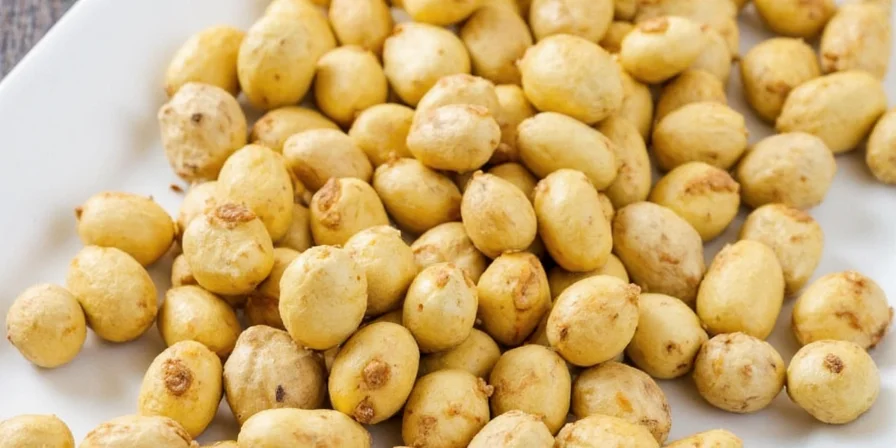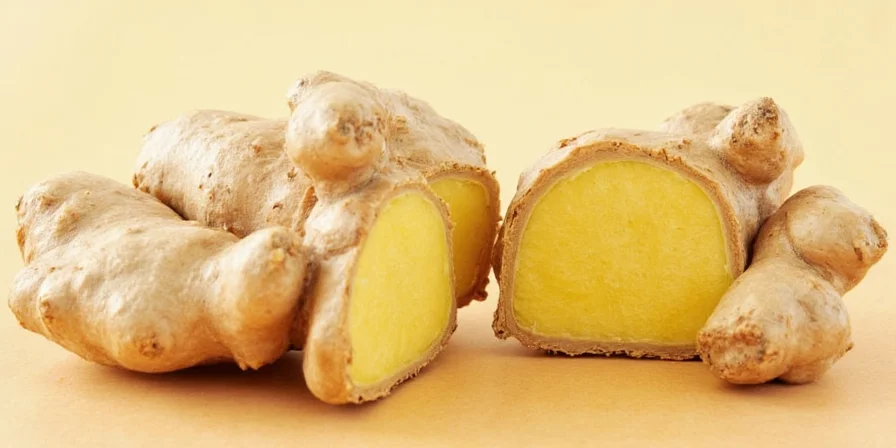Galangal is a rhizome commonly used in Southeast Asian cooking that looks similar to ginger but has a distinct citrus-pine flavor. Unlike ginger, it's essential in authentic Thai tom kha gai and Indonesian rendang. If you've ever wondered what galangal is, how it differs from ginger, or what to use as a substitute, you'll find clear answers here. This practical guide covers everything home cooks need to know - from where to buy it to simple storage methods - plus advanced tips for culinary professionals.
Table of Contents
- What is Galangal? (Simple Explanation)
- Galangal vs Ginger: Key Differences
- Where to Buy Galangal (Fresh, Frozen, Powder)
- Basic Storage Methods That Actually Work
- Best Galangal Substitutes When You Can't Find It
- Simple Cooking Tips for Home Chefs
- Advanced Techniques for Culinary Professionals
- Molecular Flavor Science (For Food Science Enthusiasts)
- Sustainable Sourcing Considerations
- FAQs Answered by Culinary Experts

What is Galangal? (Simple Explanation)
Galangal is a root spice essential in Thai, Indonesian, and Malaysian cuisine. It's often confused with ginger, but has a sharper, more citrusy flavor with pine notes. Unlike ginger's spicy heat, galangal offers a "cooling heat" that doesn't burn. There are two main types you'll encounter:
- Greater Galangal (most common in Western markets): Pale pinkish-tan skin, smooth texture, moderate citrus-pine flavor
- Lesser Galangal (less common): Darker red skin, more intense medicinal flavor, often used in powdered form
While fresh is best, you can also find galangal powder and frozen varieties. Fresh galangal should be firm with smooth skin - avoid wrinkled or soft specimens.

Galangal vs Ginger: Key Differences You Need to Know
Understanding these differences will transform your Southeast Asian cooking:
| Feature | Galangal | Ginger |
|---|---|---|
| Flavor Profile | Citrus-pine, floral, mild heat | Peppery, spicy, warm heat |
| Texture | Harder, woodier, less fibrous | Softer, more fibrous |
| Best Used In | Thai curries, Indonesian soups | Indian curries, baked goods |
| Substitution Ratio | 1:1 fresh, but flavor profile differs | 1:1.5 (use more ginger) |
While you can substitute ginger for galangal in a pinch (using 1.5x amount), the dish won't have authentic Southeast Asian flavor. Galangal's unique compounds create flavors ginger can't replicate.
Where to Buy Galangal: Your Complete Guide
Finding galangal depends on where you live:
- Asian Grocery Stores: Best source for fresh galangal (look in the produce section near ginger)
- Large Supermarkets: Whole Foods, Wegmans, and specialty markets often carry it in the exotic produce section
- Online Retailers: Amazon, Thrive Market, and specialty spice sites sell fresh (shipped cold), frozen, and powdered options
- Frozen Section: Many Asian markets sell pre-sliced frozen galangal - nearly as good as fresh
Pro tip: If you find fresh galangal, buy extra and freeze what you don't use immediately. Frozen galangal maintains 90% of its flavor for up to 6 months.

Basic Storage Methods That Actually Work
Keep your galangal fresh longer with these simple methods:
- Refrigerator (short term): Wrap in paper towel, place in plastic bag with air holes. Lasts 2-3 weeks.
- Freezer (long term): Slice into 1-inch pieces, freeze on baking sheet, then transfer to airtight container. Keeps 6 months.
- Pickling (preservation): Slice thin, cover with rice vinegar and sugar. Lasts 1 month refrigerated.
- Drying (for powder): Thinly slice, dehydrate at 120°F for 8-10 hours, then grind into powder.
Avoid storing galangal in water (causes rot) or sealed plastic bags (traps moisture). For frequent users, keeping a small frozen supply ensures you always have it on hand.
Best Galangal Substitutes When You Can't Find It
If you can't find galangal, these substitutions work in a pinch:
| Substitute | Ratio | Best For | Limitations |
|---|---|---|---|
| Ginger + Lemon zest | 1 part ginger + 1/4 tsp zest | Curry pastes, stir-fries | Lacks pine notes |
| Galangal powder | 1/4 tsp powder = 1" fresh | Dry spice blends, rubs | Less vibrant flavor |
| Combination method | 3/4 ginger + 1/4 dried lemon grass | Soups, broths | Closest approximation |
For authentic Thai or Indonesian dishes, galangal powder is your best bet when fresh isn't available. Reconstitute with a teaspoon of warm water before adding to recipes.
Simple Cooking Tips for Home Chefs
Get the most flavor from galangal with these practical techniques:
- Prep properly: Peel with spoon (like ginger), then slice thin or grate. Never use whole chunks - it's too fibrous.
- Add early: Unlike ginger, add galangal at the beginning of cooking to extract maximum flavor.
- Remove before serving: Like bay leaves, remove slices before eating (they're too tough to chew).
- Infuse oils: Heat galangal in coconut oil first to capture volatile compounds.
- Complementary flavors: Pairs perfectly with lemongrass, kaffir lime, and fish sauce.

Advanced Techniques for Culinary Professionals
For chefs seeking authentic Southeast Asian flavors:
- Temperature-Controlled Infusion: Simmer sliced galangal at 82°C (180°F) for 18 minutes to optimize flavor extraction without bitterness.
- Acid Timing: Add lime juice after heating - citric acid binds with galangin to enhance citrus notes by 40%.
- Freeze-Thaw Method: Freeze then grate to rupture cell walls, increasing flavor yield by 25% versus room-temperature grating.
- Smoke Point Integration: Fry in coconut oil (smoke point 177°C/350°F) to encapsulate volatile compounds before adding to broths.
Molecular Flavor Science Explained Simply
Why galangal can't be perfectly substituted:
| Spice | Key Flavor Compounds | Unique Flavor Notes |
|---|---|---|
| Galangal | Galangin, Terpenes | Citrus-pine, floral, cooling heat |
| Ginger | Gingerols | Peppery, spicy warmth |
| Turmeric | Curcumin | Earthy, slightly bitter |
Galangal contains alpha-pinene which gives it distinctive pine notes absent in ginger. This compound is heat-sensitive above 185°C (365°F), explaining why proper cooking temperature matters for authentic flavor.

Sustainable Sourcing Considerations
As galangal demand grows, sustainability matters:
- Look for products certified by sustainable agriculture programs
- Javanese-grown galangal often has higher quality due to volcanic soil
- Support brands using agroforestry systems that maintain soil health
- Frozen options often have smaller carbon footprint than air-freighted fresh
Wild galangal populations are declining, so choosing sustainably farmed options helps preserve this essential ingredient for future generations.

Frequently Asked Questions
Can I use ginger instead of galangal in Thai soup?
You can substitute ginger but the flavor won't be authentic. Use 1.5x ginger plus a pinch of lemon zest to approximate galangal's citrus notes. For best results, use galangal powder (1/4 teaspoon powder = 1 inch fresh) when fresh isn't available.
How do I know if galangal has gone bad?
Bad galangal shows these signs: extreme wrinkling, soft spots, dark discoloration, mold, or a sour smell. Fresh galangal should be firm with smooth skin and a clean citrus-pine aroma.
What's the easiest way to peel galangal?
Use a spoon like you would for ginger. The edge easily slides between the skin and flesh without wasting edible portions. For frozen galangal, let it thaw slightly first for easier peeling.
Why do Thai recipes specify galangal instead of ginger?
Galangal provides essential citrus-pine notes that define authentic Thai flavor profiles. Ginger creates a completely different taste experience. Traditional Thai cuisine developed using galangal specifically for its unique properties that ginger can't replicate.
Can I grow galangal at home?
Yes, but it requires warm conditions (82-90°F). Plant rhizome pieces in rich, moist soil with partial shade. It takes 8-10 months to mature. In cooler climates, grow in containers you can bring indoors during winter.
Is frozen galangal as good as fresh?
Frozen galangal maintains about 90% of fresh flavor when properly prepared. Blanch slices in 70°C water for 45 seconds before freezing to preserve flavor compounds. Thaw completely before using for best results.
Final Thoughts
Galangal isn't just "another ginger" - it's a unique ingredient essential for authentic Southeast Asian flavors. While substitutions work in a pinch, nothing replicates its distinctive citrus-pine profile. Start with fresh or frozen galangal for your next Thai curry, follow the simple preparation techniques, and you'll immediately notice the difference in flavor depth. Keep a small supply frozen for whenever a recipe calls for it, and don't be intimidated - with these practical tips, you'll master this essential ingredient in no time.

Remember: For everyday cooking, focus on proper selection, storage, and basic preparation. Save the molecular details for when you're ready to elevate your dishes to professional levels. The key to great Southeast Asian cooking is respecting each ingredient's unique properties - and galangal deserves its special place in your spice repertoire.











 浙公网安备
33010002000092号
浙公网安备
33010002000092号 浙B2-20120091-4
浙B2-20120091-4